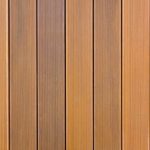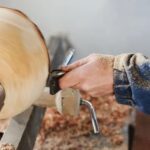Are you ready to embark on the rewarding journey of building your very own woodworking table? Whether you are a novice woodworker or an experienced craftsman, having the right tools and materials is crucial for success. In this comprehensive guide, we will explore the essential tools, materials, and techniques needed to create a woodworking table that is both beautiful and functional.
Before diving into the specifics, it is important to understand the different types of woodworking tables available. From workbenches to assembly tables, each type serves a unique purpose in your woodworking projects. We will explore these various options and discuss their features and benefits.
Once you have chosen the type of woodworking table that best suits your needs, it’s time to gather the necessary tools. A combination of hand tools and power tools is typically required for crafting a woodworking table with precision and efficiency. We will provide you with a comprehensive guide on choosing the right saws, hand tools, and power tools for your project.
In addition to tools, selecting the right wood is key to creating a durable and visually appealing woodworking table. Different wood species have distinct characteristics that can greatly impact the final result. We will delve into the differences between hardwoods and softwoods, as well as explore various wood grain patterns and how they can enhance your project.
Stay tuned as we also cover essential materials such as fasteners, joinery techniques, and wood glue. These elements are vital for ensuring that your woodworking table withstands wear and tear while maintaining structural integrity over time.
By understanding proper measurements and accurate cuts, you can achieve precision in your woodworking table construction. We will share tips and techniques for measuring accurately, making straight cuts, as well as creating complex angles such as miter cuts and bevels.
Throughout this guide, we will also discuss practical considerations when designing your woodworking table such as height adjustment options for workbenches or ergonomic considerations for assembly tables. We will also explore specialized woodworking tables such as router tables and sanding tables.
Of course, safety should always be a top priority in any woodworking project. We will provide essential safety practices and personal protective equipment recommendations to ensure you can work confidently and reduce the risk of accidents.
With all these tools, materials, techniques, and safety knowledge at your disposal, there are no limits to what you can create with your own hands. So let’s embark on this exciting journey of building your own woodworking table and turn your visions into reality.
Understanding the Types of Woodworking Tables
Woodworking tables come in various types and serve different purposes, depending on the specific needs of a woodworker. Understanding the types of woodworking tables available is essential when it comes to creating a functional workspace. From workbenches to assembly tables, each type offers its own advantages and considerations.
Workbenches
One of the most common types of woodworking tables is the workbench. Workbenches are designed to provide a sturdy and versatile surface for woodworking tasks. They typically feature a large flat top, allowing woodworkers to clamp materials securely and perform various tasks such as sawing, planing, and sanding.
When selecting a workbench for your woodworking projects, it’s important to consider factors such as height, storage options, and overall durability. The height of the workbench should be comfortable for you to work at without straining your back or arms. Additionally, having ample storage space on or underneath the workbench can help keep tools and materials organized.
Assembly Tables
Assembly tables are another type of woodworking table that plays an important role in the construction process. These tables are primarily used for assembling larger pieces of furniture or joining multiple smaller components together.
An ideal assembly table should have a large flat surface that provides stability during assembly. It should also offer provisions for clamping materials securely in place while working on them. Some assembly tables may include features like adjustable height or built-in clamps to accommodate various project sizes and requirements.
Specialized Woodworking Tables
In addition to workbenches and assembly tables, there are various specialized woodworking tables available for more specific tasks. One common example is the router table which provides a stable platform for precise routing operations. Router tables often include fences and guides that allow woodworkers to create consistent cuts and profiles with their routers.
Sanding tables are another specialized type used specifically for sanding operations. These tables may include integrated dust collection systems to keep the workspace clean and minimize the amount of dust that enters the air.
Other specialized woodworking tables include scroll saw tables, downdraft tables for finishing work, and many more. The choice of which type of table to use depends on the specific woodworking tasks you regularly undertake and the level of precision required.
Understanding the different types of woodworking tables available allows woodworkers to create a well-equipped workspace tailored to their specific needs. Whether it’s a multipurpose workbench or a specialized assembly table, having the right table for the job can significantly improve efficiency and accuracy in woodworking projects.
The Must-Have Tools for Crafting a Woodworking Table
When it comes to crafting a woodworking table, having the right tools is crucial for achieving precise and efficient results. In this comprehensive guide, we will explore the must-have tools that every woodworker should consider for their woodworking table project.
One of the first decisions to make when it comes to choosing tools for your woodworking table project is what type of saw to use. There are several options available, including circular saws, table saws, and miter saws. Circular saws are versatile and portable, making them suitable for various cutting tasks.
Table saws are known for their accuracy and stability, making them ideal for straight cuts. Miter saws excel at making crosscuts and miter cuts at different angles. Evaluating the specific needs of your project will help you determine which type of saw is best suited for your woodworking table construction.
In addition to a saw, there are several essential hand tools that no woodworker should be without. Chisels come in handy for carving out joints and fine tuning details in your woodworking table. Clamps are essential for holding pieces together securely while glue or fasteners dry.
Hand planes are useful for smoothing surfaces and achieving a professional finish on your woodworking table. These hand tools offer precision and control that power tools may not provide, allowing you to create intricate details with ease.
When it comes to power tools, there are a few key ones that can greatly enhance efficiency in constructing a woodworking table. Routers are versatile tools that can be used for shaping edges, creating joints, and adding decorative details to your woodworking table design. Drills are essential for drilling holes and driving screws into place quickly and accurately. Jigsaws allow you to make curved cuts or intricate designs in the wood surface of your tabletop or other components.
By investing in these must-have tools, woodworkers will have a solid foundation to tackle the construction of their woodworking tables with confidence and precision. These tools allow for versatility, efficiency, and creativity in the woodworking process, ensuring that your final product is a beautiful and functional piece for years to come.
Selecting the Perfect Wood
Wood selection is a crucial step in building a woodworking table. The type of wood you choose will determine the durability, aesthetics, and overall quality of your table. There are various factors to consider when selecting wood for your project, including the wood species and their characteristics.
One important consideration is the choice between hardwood and softwood. Hardwood comes from deciduous trees like oak, cherry, and maple, while softwood comes from coniferous trees like pine and cedar. Hardwoods are denser and stronger than softwoods, making them more suitable for heavy-duty tables that require durability. Softwoods, on the other hand, are lighter and easier to work with, making them ideal for smaller tables or projects that prioritize ease of construction.
Another aspect to consider is wood grain patterns. Wood grain refers to the unique patterns created by the growth rings in the tree trunk. Figured wood, such as curly or birdseye maple, has distinctive patterns that add visual interest to a woodworking table. Straight grain wood is more common and provides a uniform appearance.
In addition to wood species and grain patterns, it’s essential to evaluate the moisture content of the wood. Wood with high moisture content can shrink or warp over time as it dries out. To ensure stability in your woodworking table, it’s important to use properly dried or seasoned wood. Moisture meters are useful tools for measuring wood moisture content before starting your project.
| Wood Species | Characteristics |
|---|---|
| Oak | Durable; attractive grain pattern |
| Maple | Hard and sturdy; beautiful figure patterns |
| Cherry | Rich, reddish-brown color; ages beautifully |
| Pine | Lightweight; easy to work with |
| Cedar | Naturally insect and rot-resistant; aromatic scent |
Remember, selecting the perfect wood for your woodworking table is not only about aesthetics but also about ensuring durability, stability, and ease of construction. Take the time to research different wood species and their characteristics to make an informed decision that suits your project’s requirements.
Essential Materials and Supplies
Materials and supplies are crucial components when it comes to building a woodworking table. They not only help hold the table together but also enhance its overall stability and durability. In this section, we will delve into the various essential materials and supplies needed for crafting a woodworking table.
Choosing the Right Fasteners: Common Nails, Wood Screws, or Pocket Screws?
Fasteners play a vital role in ensuring that your woodworking table remains securely assembled. There are different types of fasteners available, each with its own advantages and applications. Common nails are popular for their simplicity and affordability. They are suitable for general woodworking projects where aesthetics may not be a primary concern.
Wood screws, on the other hand, offer greater holding power and can be easily removed if needed. They come in various sizes and types such as flathead screws or Phillips-head screws. For those looking for a more discreet fastening method, pocket screws can be an excellent choice. These hidden fasteners provide a seamless appearance while still maintaining strong joinery.
Secure Joinery Techniques: Dowels, Biscuits, and Mortise and Tenon Joints
In addition to fasteners, secure joinery techniques are essential for constructing a sturdy woodworking table. Dowels are cylindrical wooden pins that fit into pre-drilled holes to connect two pieces of wood together. This technique provides excellent alignment and adds strength to the joint.
Biscuit joinery involves using thin oval-shaped wooden discs (biscuits) that are inserted into slots cut into the mating pieces of wood. This technique is known for its precision alignment and reinforcement capabilities.
Mortise and tenon joints are considered one of the strongest choices for joining two pieces of wood together. It involves creating a rectangular hole (mortise) in one piece of wood that matches with a corresponding projection (tenon) on another piece of wood.
The Importance of Quality Wood Glue: Which Type to Use?
Wood glue is an essential adhesive for woodworking projects, including building a woodworking table. It provides additional strength and stability to joints and ensures that the table remains intact over time. When selecting wood glue, it is important to choose a high-quality adhesive specifically formulated for woodworking applications.
There are different types of wood glue available, such as yellow, white, and polyvinyl acetate (PVA) glues. Yellow glue (also known as carpenter’s glue) is commonly used in woodworking due to its strong bond, fast drying time, and water resistance. White glue is similar to yellow glue but dries clear, making it suitable for lighter-colored woods or when aesthetics are a priority. PVA glues offer similar characteristics as yellow or white glue but are often more expensive.
Proper Measurements and Accurate Cuts
When it comes to woodworking, precision is key. Proper measurements and accurate cuts are essential for creating a high-quality woodworking table. In this section, we will explore some tips and techniques to help you achieve the precision needed for your project.
Mastering the Art of Measuring:
One of the first skills you need to develop in woodworking is the ability to measure accurately. This starts with understanding how to read tape measures correctly. Familiarize yourself with fractions and decimals so that you can interpret measurements accurately.
In addition to tape measures, using squares is also crucial for precise measurements. Combination squares, try squares, and speed squares are all excellent tools that can assist you in verifying right angles or marking straight lines.
Achieving Straight Cuts:
Straight cuts are fundamental in woodworking, and there are different techniques you can use to ensure straightness. Guided techniques involve using tools such as a miter gauge on a table saw or a fence on a circular saw or jigsaw. These guides provide stability and control as you make your cut.
On the other hand, freehand techniques require more practice but can be useful when cutting irregular shapes or following curved lines. With experience, you will develop a steady hand and be able to make accurate freehand cuts.
Creating Complex Angles:
Sometimes woodworking projects require intricate angles such as miter cuts or bevels. To achieve these complex angles accurately, it’s important to understand their differences and how to set up your tools accordingly.
A miter cut involves joining two pieces at an angle other than 90 degrees. A miter saw or a table saw with a miter gauge is commonly used for making these types of cuts.
Bevels, on the other hand, involve tilting the blade of your saw at an angle other than 90 degrees while maintaining a straight cut. This technique is often used for creating chamfers or decorative angles on the edges of a woodworking table.
By mastering the art of measuring, achieving straight cuts, and understanding complex angles, you will be well on your way to creating a woodworking table with precision and accuracy.
| Tips for Precision |
|---|
| Master the art of measuring accurately |
| Use squares to verify right angles |
| Explore guided and freehand techniques for making straight cuts |
| Understand miter cuts and bevels for creating complex angles |
Practical Woodworking Table Designs and Considerations
Workbenches: Finding the Best Height, Storage Options, and Work Surface
When it comes to woodworking tables, workbenches are one of the most commonly used. They provide a sturdy and versatile surface for working on various projects. However, there are several considerations to keep in mind when choosing or building a workbench.
One important factor is finding the optimal height for your workbench. The height should allow you to stand or work comfortably without straining your back or arms. As a general rule of thumb, the workbench should be around waist height or slightly below. However, this can vary depending on your personal preference and physical attributes.
In addition to height considerations, storage options are also crucial for a functional workbench. Having ample storage space allows you to keep your tools organized and within reach while working on your projects. Consider incorporating shelves, drawers, or pegboards into your workbench design to maximize storage efficiency.
Lastly, selecting the right work surface material is essential for durability and functionality. Many woodworkers prefer a hard maple top due to its hardness and resistance to wear. Other common options include plywood with an MDF (medium-density fiberboard) top or even solid oak. Consider your specific needs and budget when choosing the best work surface material for your DIY woodworking table.
Assembly Tables: Customization, Ergonomics, and Optimal Workflow
Assembly tables are another crucial woodworking table design that deserves attention. These tables provide a spacious area for assembling larger projects such as cabinets or furniture pieces. When designing an assembly table, customization, ergonomics, and workflow optimization should be key considerations.
Customization is essential to match the specific needs of your projects. Depending on the size and type of projects you typically work on, you may need a larger or smaller assembly table. Consider incorporating features like adjustable height, extendable wings, or additional supports to accommodate various project sizes.
Ergonomics play a significant role in ensuring comfort and reducing strain while assembling projects on the table. Make sure the table’s height is appropriate for your standing or sitting position, and consider adding cushioning or anti-fatigue mats to reduce discomfort during long hours of work.
Optimizing workflow involves creating a layout that allows for easy access to tools, materials, and workspaces. Consider incorporating storage shelves or drawers around the assembly table to keep tools and supplies within arm’s reach. Additionally, think about including features such as holes or clamps for securing projects during assembly.
Specialized Woodworking Tables: Router Tables, Sanding Tables, and more
Aside from workbenches and assembly tables, there are various specialized woodworking tables that can enhance your woodworking experience. Some examples include router tables, sanding tables, and outfeed tables.
Router tables provide a stable platform for using handheld routers. They offer increased precision when routing edges or creating intricate designs with router bits. Look for router tables with adjustable fences, dust collection ports, and miter gauge tracks for optimal versatility.
Sanding tables are designed specifically for sanding operations in woodworking projects. These tables feature a flat surface with integrated sanding disks or belts to ensure even sanding results. They often come with dust collection systems to minimize airborne particles while working.
Outfeed tables – also known as support or extension tables – are used alongside tools like table saws or jointers. These tables provide additional support for long pieces of wood as they pass through the tool. Outfeed tables help prevent sagging or instability during cutting or shaping processes.
When considering specialized woodworking tables, ensure compatibility with your existing tools and workspace. Additionally, prioritize safety by following proper usage guidelines and precautions for each type of table.
Safety First
Woodworking can be a fulfilling and enjoyable hobby, but it’s important to prioritize safety when working with tools and materials. Using the proper safety practices and personal protective equipment (PPE) is essential to prevent accidents and injuries. In this section, we will explore some key safety measures to take and the necessary PPE for woodworking.
Eye and Ear Protection
When working with wood, there is always a risk of hazards such as flying debris or wood chips that can cause eye injuries. Therefore, wearing safety glasses or goggles is crucial to protect your eyes. Ensure that the eyewear you choose meets ANSI standards for impact resistance.
Additionally, woodworking can generate loud noises that can damage your hearing over time. Wearing earplugs or earmuffs is highly recommended to protect your ears from prolonged exposure to high noise levels.
Safe Handling of Power Tools
Proper handling of power tools is vital to prevent accidents. Always maintain a firm grip on the tool while using it and avoid wearing loose clothing or jewelry that could get tangled in moving parts. It’s also crucial to make sure you have a stable work surface and secure any workpieces before starting.
Using guards on power tools, such as table saws or routers, is an important safety measure as they help prevent accidental contact with rotating blades or bits. Ensure that the guards are in good condition and functioning properly.
Securing Your Workspace
Maintaining a clean and organized workspace not only helps with efficiency but also improves safety. Having a clutter-free area reduces the risk of tripping over tools or materials, reducing the chance of accidents.
Dust collection systems are essential in woodworking shops as they capture fine particles released during cutting or sanding processes, preventing them from being inhaled into your lungs. Wear a dust mask when necessary, especially if you’re working with materials such as MDF (medium-density fiberboard) that produce a large amount of dust.
It’s also important to have fire extinguishers readily available in case of emergencies. Know the location and proper use of fire extinguishers and have an emergency plan in place, including evacuation procedures.
By following these essential safety practices and wearing appropriate PPE, you can enjoy woodworking with peace of mind. Remember that safety should always be a top priority in your woodworking endeavors.
Conclusion
In conclusion, this article has provided a comprehensive guide to creating your own woodworking table. We have explored the essential tools and materials needed for this project, as well as discussed the different types of woodworking tables you can choose from. Furthermore, we have delved into the various techniques and considerations involved in crafting a woodworking table.
One of the key takeaways from this guide is the importance of selecting the right tools for your project. Whether it’s choosing between a circular saw, table saw, or miter saw, or understanding the functionality of hand tools such as chisels and clamps, having the right equipment is crucial for achieving quality results. Additionally, we have discussed the different wood species and their characteristics, helping you make an informed decision when selecting wood for your table.
It is also important to pay attention to proper measurements and accurate cuts in order to achieve precision in your woodworking table. From mastering measurement techniques to creating complex angles with miter cuts and bevels, these skills will contribute to a well-crafted end product.
Building your own woodworking table can be a rewarding experience that allows you to unleash your creativity while also providing a functional piece of furniture. By following this ultimate guide and utilizing the knowledge provided on tools, materials, techniques, and safety practices, you are now equipped with everything you need to embark on this exciting journey. So why wait? Start gathering your materials and get ready to bring your vision of a custom-made woodworking table to life.
Frequently Asked Questions
Is it cheaper to buy or build a workbench?
Whether it is cheaper to buy or build a workbench depends on various factors. Buying a pre-made workbench might initially seem cost-effective, as it requires minimal effort and time investment. However, these workbenches tend to be made with lower quality materials and may lack customization options.
On the other hand, building your own workbench allows you to have complete control over the design and materials used. By choosing affordable yet durable materials like plywood or Medium-Density Fiberboard (MDF), you can potentially save money while still creating a sturdy workbench tailored to your specific needs.
What kind of wood is used for a work table?
The choice of wood for a work table primarily depends on the intended purpose and personal preferences. Hardwoods such as oak, maple, or beech are popular choices due to their durability and resistance to wear and tear. Additionally, hardwoods are more resistant to dents and scratches caused by tools during woodworking projects.
Softwoods like pine or fir may also be used for work tables but are generally less durable than hardwoods. Ultimately, it is important to consider factors such as budget, availability of wood species in your area, and the level of durability required before selecting the type of wood for your work table.
What is the best surface for a woodworking table?
The best surface for a woodworking table should be both flat and robust enough to withstand the demands of woodworking tasks. Many experienced woodworkers prefer using a solid core door as their workspace surface due to its stability and affordability. These doors consist of an engineered core covered with a veneer that provides excellent durability while minimizing warping issues common with solid wood surfaces.
Alternatively, medium-density fiberboard (MDF) is another popular choice due to its smoothness and flatness, making it easier to maneuver wood pieces during cutting or assembly processes. Regardless of the surface material you choose, ensuring it is well-maintained, clean, and free from imperfections will contribute not only to better accuracy in woodworking but also longevity of the work table itself.

Hi everyone! I’m a woodworker and blogger, and this is my woodworking blog. In my blog, I share tips and tricks for woodworkers of all skill levels, as well as project ideas that you can try yourself.





